Hello everybody!
Today I’m going to show you how to make classic, spicy, traditional napa cabbage kimchi called tongbaechu-kimchi, a.k.a. baechu-kimchi or pogi-kimchi. But this dish is so common and iconic among Koreans that we simply call it “kimchi.” When people talk about kimchi, this is the side dish they’re referring to, despite the fact that there are many kinds of kimchi in Korean cuisine, and many made with napa cabbage, too.
Over the years I’ve posted recipes for a few of them, but I’ve never made an in-depth video for making tongbaechu-kimchi! I’ve made a video for mak-kimchi (easy kimchi recipe), which is very similar but is easier because you to chop up the cabbage into bite size pieces first, and I’ve made an ultra simple yangbaechu-kimchi (emergency kimchi). Many years ago I even posted a recipe showing how to make baechu-kimchi with kkakdugi in one batch. But until now, I’ve never posted the most classic and traditional napa cabbage kimchi. (I also have a vegan kimchi version of this recipe, too!)
For me, this kimchi recipe has the traditional flavor I am looking for. It uses the whole cabbage leaf, which makes it more labor-intensive than the other ones on my website, because you’ll need to take time to spread the spicy paste leaf by leaf. It’s more work, but this is the traditional style and if you can make this kind of kimchi well, you can consider yourself good at Korean cooking.
To make this kimchi we need to first soak the cabbage in a salty brine to soften the leaves (some people swear by sea salt but I always use Kosher salt in all my Korean dishes). Then lactobacillus bacteria can do their work and convert sugar into lactic acid, which preserves the cabbage and changes the flavor over time. But you don’t have to wait for the kimchi to ferment before you enjoy it, you can eat it right away and keep eating it as it ferments and eventually goes sour. Then it’s perfect for dishes like kimchi-jjigae and kimchi stir fried rice.
As I mention in the video, my mom used to make kimchi from 200 heads of cabbage! This was kimjang kimchi, made with her friends at the beginning of winter, and meant to last until the spring. 3 to 4 of her friends would come over and help her chop vegetables and most importantly, spread the paste on the leaves. This always needs to be done by hand. They would bring their own rubber gloves, and spend the day talking and laughing, and always had pollock stew or beef radish soup for lunch. They had a lot of fun!
At the end of the day they would take some kimchi home with them, but my mom would get all the rest, which lasted my whole family through the winter. And when my mom’s friends needed to make their winter kimchi, my mom brought her gloves over to their houses and helped them, like they did for her.
In the video I also show you how to ferment it in a traditional onggi. Using an onggi is not mandatory, but for those of you who have one already, this is how you use it! If you don’t have one, just use a BPA-free plastic container, or a glass container.
I answer many other frequently asked questions about kimchi-making in this video.
I hope you enjoy the recipe, and if you love kimchi, I encourage you to make your own kimchi at home. It’s delicious, easy, and a fun thing to do!
Ingredients
Makes about 8 pounds (3.6 kg) of Kimchi
For salting cabbage:
- 6 pounds (about 2.7 kg) napa cabbage
- ½ cup Kosher salt (2.5 ounces: 72 grams)
For making porridge:
- 2 cups water
- 2 tablespoons sweet rice flour (aka glutinous rice flour)
- 2 tablespoons Turbinado sugar (or brown or white sugar)
Vegetables:
- 2 cups Korean radish matchsticks (or daikon radish)
- 1 cup carrot matchsticks
- 7 to 8 green onions (scallions), chopped
- 1 cup chopped Asian chives (buchu), optional (substitute with 3 green onions, chopped)
- 1 cup water dropwort (minari), optional
Seasonings and spices:
- ½ cup garlic cloves (24 garlic cloves), minced
- 2 teaspoon ginger, minced
- 1 medium onion, minced
- ½ cup fish sauce
- ¼ cup fermented salted shrimp (saeujeot) with the salty brine, chopped
- 2 cups red pepper flakes (gochugaru)
Directions
Prepare and salt the cabbage
- If the cabbage cores stick out too much, trim them off with your knife over your cutting board.
- To split a cabbage in half without shredding the densely packed leaves inside, first cut a short slit in the base of the cabbage, enough to get a grip on either half, and then gently pull the halves apart so the cabbage splits open.

- Cut a slit through the core of each half, 2 inches above the stem. You want the cabbage leaves to be loose but still attached to the core.

- Dunk the halves in a large basin of water to get them wet. Sprinkle salt between the leaves by lifting up every leaf and getting salt in there. Use more salt closer to the stems, where the leaves are thicker.


- Let the cabbages rest for 2 hours. Turn over every 30 minutes, so they get well salted. From time to time you can ladle some of the salty water from the bottom of the basin over top of the cabbages if you want to.


- After 2 hours, wash the cabbage halves a few times under cold running water. Giving them a good washing, to remove the salt and any dirt. As you wash, split the halves into quarters along the slits you cut into earlier. Cut off the cores, give them a final rinse, and put them in a strainer over a basin so they can drain well.
While the cabbage is salting for 2 hours, and in between the times you’re turning it over, you can make the porridge:
- Combine the water and the sweet rice flour in a small pot. Mix well with a wooden spoon and let it cook over medium heat for about 10 minutes until it starts to bubble. Add the sugar and cook 1 more minute, stirring. Remove from the heat and let it cool off completely.
- Pour cooled porridge into a large mixing bowl. Add garlic, ginger, onion, fish sauce, fermented salted shrimp, and hot pepper flakes. Mix well with the wooden spoon until the mixture turns into a thin paste.




- Add the radish, carrot, and green onion, plus the Asian chives (or more green onions) and the water dropwort if you’re using them. Mix well.



Make kimchi
- In a large bowl, spread some kimchi paste on each cabbage leaf. When every leaf in a quarter is covered with paste, wrap it around itself into a small packet, and put into your jar, plastic container, or onggi.
- Eat right away, or let it sit for a few days to ferment.
On fermentation
- The kimchi will start fermenting a day or two at room temperature, depending on the temperature and humidity of your room. The warmer and more humid it is, the faster the kimchi will ferment. Once it starts to ferment it will smell and taste sour, and pressing on the top of the kimchi with a spoon will release bubbles from beneath. If you’re using a sealed jar with a lid, be sure to open it once a while, let it breathe, and press down on the top of the kimchi.
- Once it starts to fermented, store in the refrigerator to use as needed. This slows down the fermentation process, which will make the kimchi more and more sour as time goes on.
Maangchi's Amazon picks for this recipe
It's always best to buy Korean items at your local Korean grocery store, but I know that's not always possible so I chose these products on Amazon that are good quality. See more about how these items were chosen.



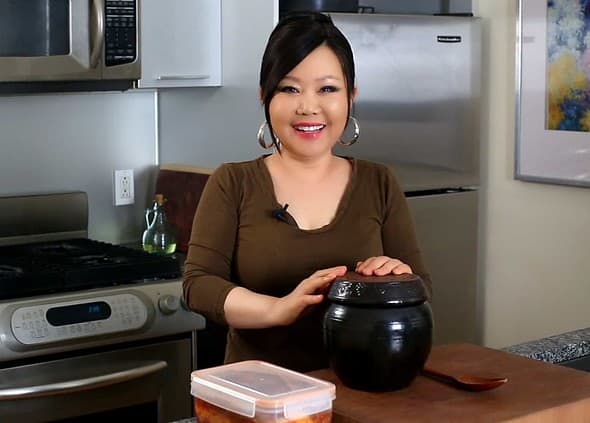
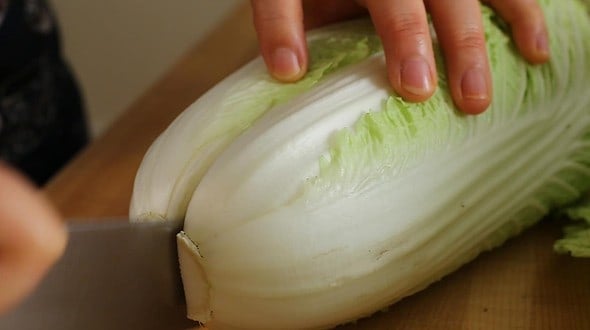
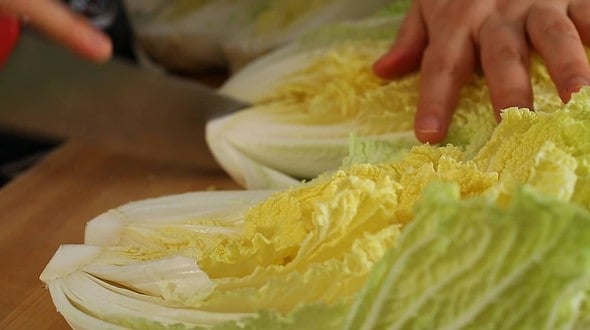
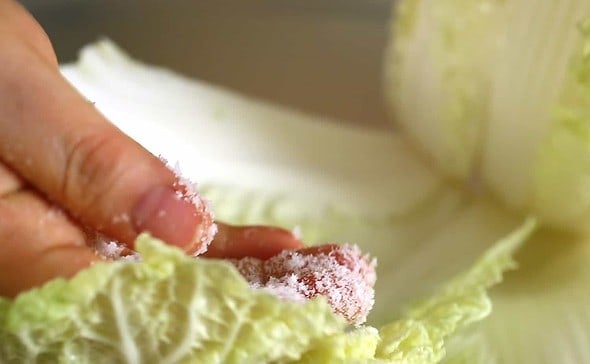
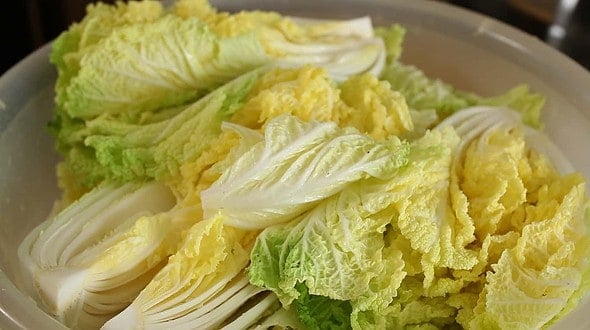
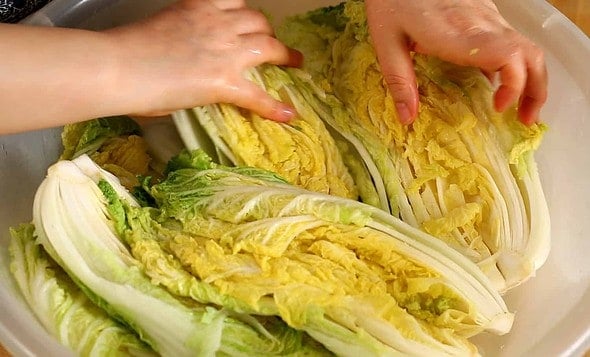
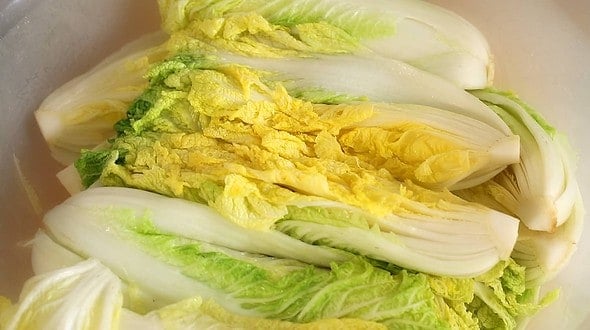
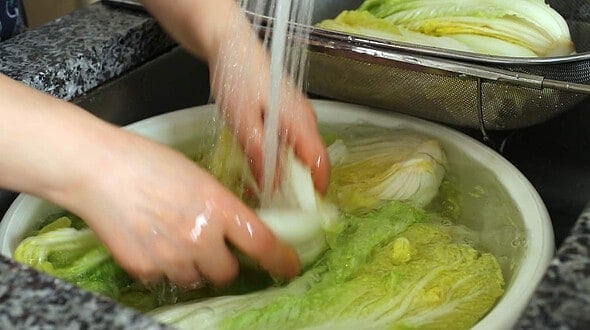
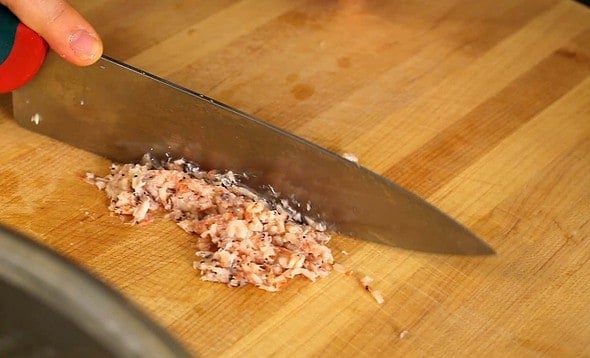
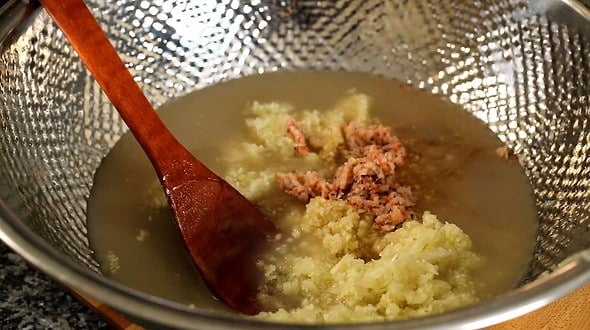
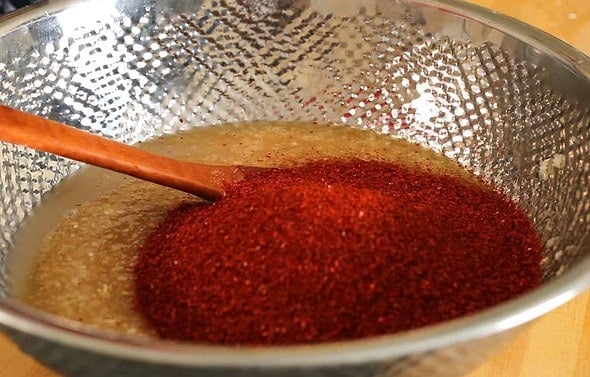
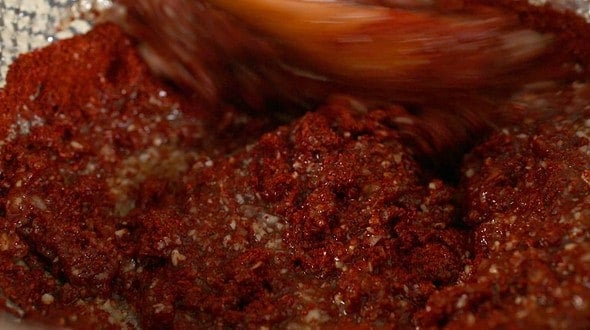
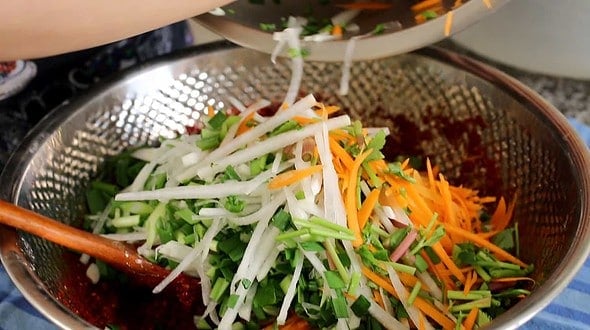
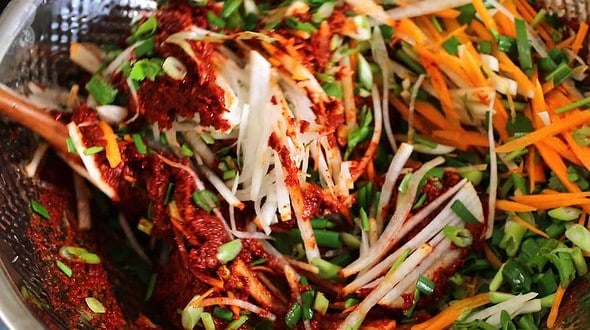
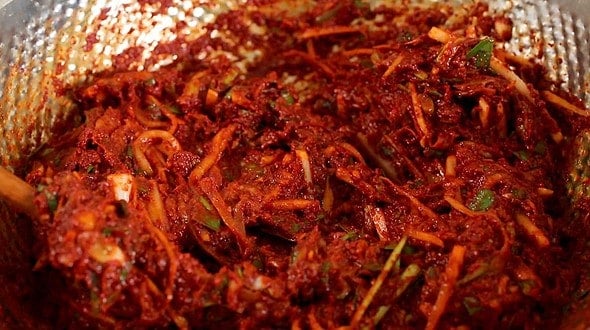
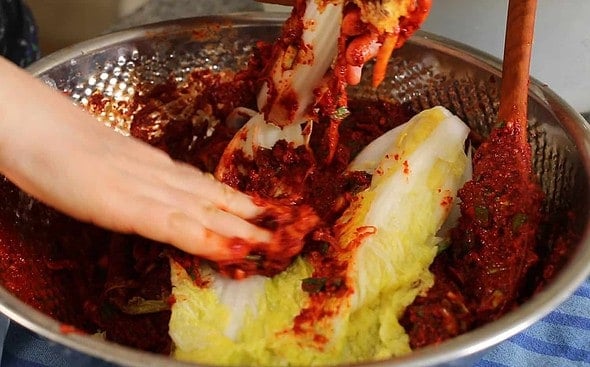
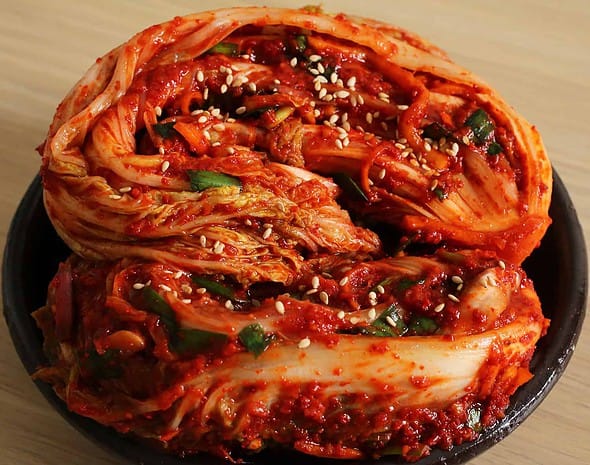
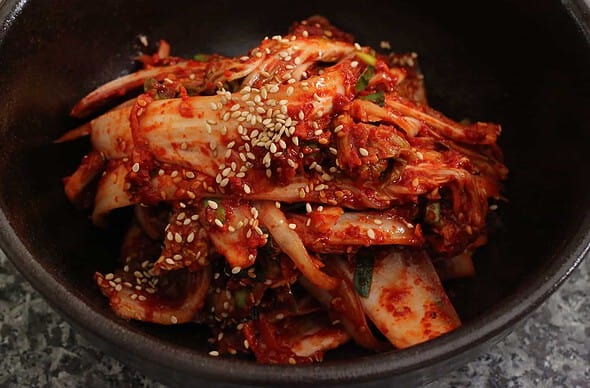
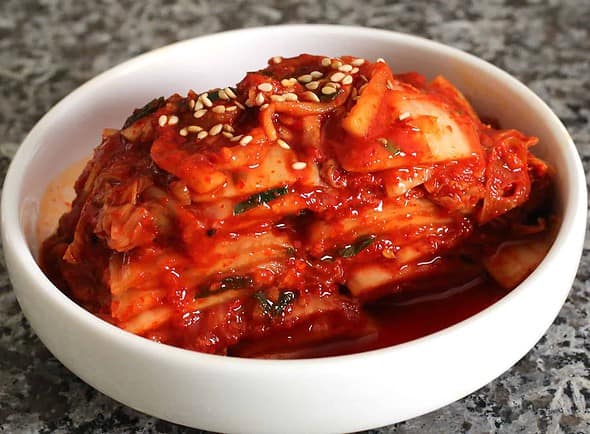

































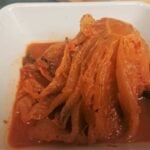
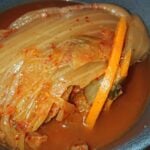
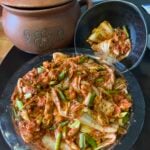
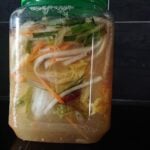




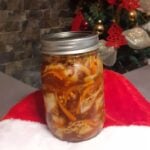
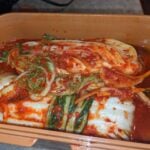


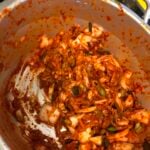
Hello and thank you for the recipe. I have been living in France for a few years now and as I have been craving some good spiciness I just made my first batch of your kimchi using your recipe. It “looks” just like its supposed to! My question: I have made 4 big jars and am wondering how can I make them “shelf stable”. As I know of course that the kimchi will continue to age, there will be a moment I cannot eat all before it gets too old. Hence, how do I preserve a few of my jars? If I close the jars tight (like a clamp Mason jar), if I then open it after a long time it will most likely explose?! Thank you for your reply.
In my case, when I make kimchi, I store it directly in the refrigerator. It takes about two weeks for the kimchi to ferment in the refrigerator. Therefore, I can enjoy it deliciously for about a few months. But when I prepare a large batch of kimchi, I put extra salt in the kimchi I’ll eat later. Salt slows down kimchi fermentation.
Can I cut up the cabbage into bite sized pieces instead of leaving it whole, and then just toss it with the porridge and other ingredients?
It’s already cut up when I buy it at the grocery store, and this is how everyone here likes it.
Ruined batch??
Hello!!
I want to thank you for taking the time to write up and post this and so many other recipes!! A friend of mine used to make Kimchi for me, but then she retired and we could no longer meet. :( I tried grocery store kimchi, but ended up composting it. I finally found your recipe and tried my hand a few years ago. It turned out great thanks to you!!! I have been making my own for quite a few years now and some of my Korean friends laugh because it is better than theirs. Considering I am a caucasian male, that is high praise to your efforts.
Now, for my self-inflicted problem…I started my Kimchi last weekend and set the porridge on the deck to cool. Long story short, I forgot to add the porridge to the mix before coating the cabbage.
Is the entire batch ruined and I just made more compost?
Thanks!!
James
Just try a little piece of the salted(?) cabbage and the mix.
If they both taste OK I’d risk it.
Else: toss the “off” one(s). Use whatever is still OK. If not for kimchi then for soup etc.
Hi James,
If the kimchi tastes alright, it’s fine even if you didn’t include porridge. : )
Did the kimchi paste seem too dry when you were mixing it? Next time, keep the hot porridge nearby to ensure you don’t forget to add it.
Yes, homemade kimchi is the best!
Hi, Maangchi!
Can I use fermented anchovies in place of the fermented salty shrimp, like the ones I use in your quick kimchee. I’m allergic to shrimp. Thank you for your help and all your great recipes!!
Can someone help me out? Has anyone used fermented anchovies instead of the salty shrimp in this recipe? Thanks for any help.
Like in fish sauce? Use less of that because of the saltiness (about one third in my experience).
It should work fine – or just use traditionally-brewed Korean soy sauce. It works like a starter in sour-dough.
Good luck!
My husband and I have been putting up batches of kimchi following your recipe for years. Often making Kimichi soup from it. It over the years has become our favorite comfort food. If have a cold or your not feeling your best because you have had a rough day then Kimchi soup is my go to dish.
Over the years I often bring Jars or batches of soup to my loved ones. When they are feeling low. I always make huge batches and keep the bottom of my refrigerator full to share.
At the end of 2020 my husband and I became full time RVers. Traveling across the US. This summer we came home to visit all of our friends and growen daughters in New england.
As we visited so many of them asked if we would be putting up a batch of house Kimchi while I was home. Expressing how much they had missed having my Kimchi on hand.
So I offered to teach them all how to make it while I was home. So we set a date. A few days before I took them all to HMart to show them what ingredients they would need. We had a great time shopping together to get what we needed. A few days later we gathered together making a huge batch so each household could bring some home and share in the bounty.
This was my first time making a community batch. As we all joined around the table sharing stories of our lives we made this kimchi. I must say this is my finest batch ever made.
Then after we all joined together for hot pot for dinner. I made sure to put up extra porridge so I could serve it over fresh cucumbers with our dinner. So they all got a chance to taste the fresh porridge as I am always amazed at how it changes during the fermentation process.
It’s like all of us as we live our experiences change us. I wanted them to share in this idea getting to taste it fresh then tasteing their own batches after fermentation. Asking them to taste it every 24 hours to find what level fermentation they liked best then placinginto their refrigerators. I like my batches at about 48 hours to 72 hours as I like the complexity age brings!!
We had such a lovely time around the table working together and sharing our stories!! Having hot pot and fresh kimchi cucumbers together.
Often when we travel my husband and I visit small Korean restaurants and markets since I can not have a refrigerator without our house kimchi or korean food. Or wanting to taste others korean cooking. Often making friends with the people all over the US we meet bonding over Korean food. Finding that this food has helped me to bond with others nourishing my body mind and soul.
Many are amazed that this middle aged white lady loves their food so much that she even travels when her own batches of home made kimchi!! Sharing in my tales of putting up batches in my 100 square foot truck camper. Laughing at my enjoyment of this simple dish.
Every time I have opened this container I am reminded of this special batch and how it came to be!! Knowing how it brought us all together.
Your recipes came to me at a time in my life I truly needed them. Sharing your culture with me and your love of food. Changing me forever and making me better as I ferment with age!!
Thank you for helping me to have such a wonderful time!! Showing me your beautiful culture!! ❤️
Thank you for sharing your story with me! I think that’s wonderful that you are so open in sharing your experience, food and knowledge with other people.
I also travel with my own kimchi. It’s great because you can make so many delicious dishes with it!
I made a big batch of Kimchi, gave some container’s away to my son’s family who is Korean. I now have been eating the refrigerated ones I have for me and I am so happy to say it has fermented I can taste it now that its cold and tastes wonderful! Thank you for sharing your great recipe’s with us!
Hi! I made my first kimci yesterday using your recipe. I took my kids for a drive in the morning- we went to Koren grocer to get all ingredients that you wouldn’t get in supermarket. It took a bit of time to prepare everything but result is . I love it! Can wait for the fermentation to be in a full swing! I love the sourness of it. Thank you !
See full size image
Hi so I grew up all over Asia and I’ve found that I really miss some of the old tastes and kimchi was one so I figured I would make it. the sad thing is that my dad is allergic to shrimp so I was wondering if there is a good alternative be it more fish sauce or miso or something for the missing umami?
You still can make delicious kimchi without using saeujeot (salted fermented shrimp).
This is the second time I’m making your recipe and everyone that’s tried it loves it! I love your videos also :) I have a question regarding the fermenting process. I will be away for the weekend, would it be ok to leave it out to ferment until I get back? It will be a total.of 4 days.
Please refrigerate your kimchi before leaving to prevent it from becoming too sour. While kimchi will continue to ferment in the refrigerator, the cold temperature will slow down the fermentation process. Good luck!
Thank you! If I return and it’s not sour enough, can I remove it from the refrigerator to have it ferment more?
Hi Maanchi,
Thank you for the great videos, so fun and easy to follow, I can’t get fermented shrimp but I bought Thai shrimp paste, is this okay to use instead??
Yes, fermented Thai shrimp paste will work well, too. Good luck!
Anyong!
Thank you for your amazing recipe. I have made it so many times now. It’s a big hit among my family and friends here in Goa, India.
I made a new batch two day ago and left it out for the night. This time i used one mason jar along with the usual containers that I use for kimchi. The next morning the mason jar had leaked the liquid. Now that it quite dry hardly any liquid left. Is there a way to add more liquid? All the jars are in the refrigerator now.
See full size image
Annyong! : )
Your bright red and juicy kimchi looks amazing! I’m curious, is it easy to find Korean cooking ingredients like Korean gochu-garu and napa cabbage in Goa, India? Wishing you continued success with your Korean cooking!
By the way, I have a list of Korean grocery stores in India on my website that may be helpful for sourcing ingredients. https://www.maangchi.com/shopping/india
Thank you!
Napa cabbage is available here. I made gochugaru using dried kashmiri chillies and local Goan chillies.
Thanks for the website! Will surely check it out.
By they way…the kimchi turned out good from my leaked out jar.
We had friends over for dinner last week and I made Korean food.
:)
See full size image
That’s impressive that you made your own gochu-garu by mixing a few types of your available red dried peppers!
It shows your passion for cooking and delicious food! Your kimchi, Korean fried chicken, and gimbap all look delicious.
Cheers,
Hi Maangchi!
I’ve been using your recipes for about 10 years now (ever since I moved to Korea and especially after I moved back home with my Korean husband) but this was my first time making kimchi! It turned out beautifully!
My dear mother-in-law sadly passed away several years ago and my grandmother-in-law is getting quite old and doesn’t cook as much. So your recipes have become our family recipes. You truly have become like an 이모 to us :) My husband said he really liked the kimchi, and then said “it’s quite spicy! But it’s Maangchi’s recipe, so of course it’s spicy.” Thank you so much for sharing your recipes and your love of cooking with the world!
Love your kimchi recipes, yum yum and your video presence is great. I prefer to watch and then work with the recipes. My friends also commented that it is the best kimchi they have tried, so well done to you.
I’m sorry for all the comments. How many heads of cabbage do you think should I use to make enough Kimchi for 1 year for 1 or 2 people(enough to share with friends but it’s just me eating it at home)?
Napa cabbage is on the expensive side, so I’d like to buy like 10 heads and just make Kimchi when it gets to be on sale
Hi Maanghi, I’m currently reading your Cookbook “Maangchi’s Big Book of Korean Cooking” and I read your tip about using clams.. I’m sorry if I’m giving away the secret of the cookbook :(. But I was wondering, can I use frozen clams? Or should the be fresh? I’m in the midwest, like right in the middle of the continent so I’m not sure how fresh I can get. Thank you so much for all your work! I love the book!
I’m sorry, it was Oysters and it was in the Makkimchi. Can i add them here? or no?
Hi, Maangchi. Hi, everyone!
It was my first attempt in making kimchi.
And I think I might have made a mistake.
First of, after 36 hours my kimchi produced a looooot of juice. Is it okay?
It doesn’t have sourness yet, should I wait more time? It also lack in saltiness.
I think that my mistake was not to use enough salt in the soaking process. If it so, can I add more salt now?
See full size image
That’s how it looks like :-)
See full size image
I think it was the salting process. The salt helps to draw out the water from the cabbage and also to prevent it from watering during the fermentation process.
Oh, yeah( seems like that.
Thanks for your reply)
Hi, I was going to say that yeah it looks like you didn’t use enough salt. The salt in the recipe is used to draw out the water from the cabbage, so that the water wouldn’t be in the kimchi, I believe. I’m not sure if it’s save-able, the salt helps with fermentation, so if fermentation doesn’t start, it’s possible botulism might. If you see bubbles, try it, but unless anyone else says this is fine, I’d be extremely cautious. I’m sorry :( but please don’t give up!!!! Homemade Kimchi is the best <3
Thank you!
If I press on it, it releases bubbles, but the taste doesn’t seem to be normal.
I’ll definitely try again with more salt. ❤️❤️❤️
Thank you so much for the recipe. I did it today for the first time. My kids and I love Korean Kimchi. I decided to make it instead of driving about 40mts to the store that has kimchi. Wow!!! It looks amazing waiting for the fermentation process even though after 1 hour I tried it and wow amazing! Thank you!!!
See full size image